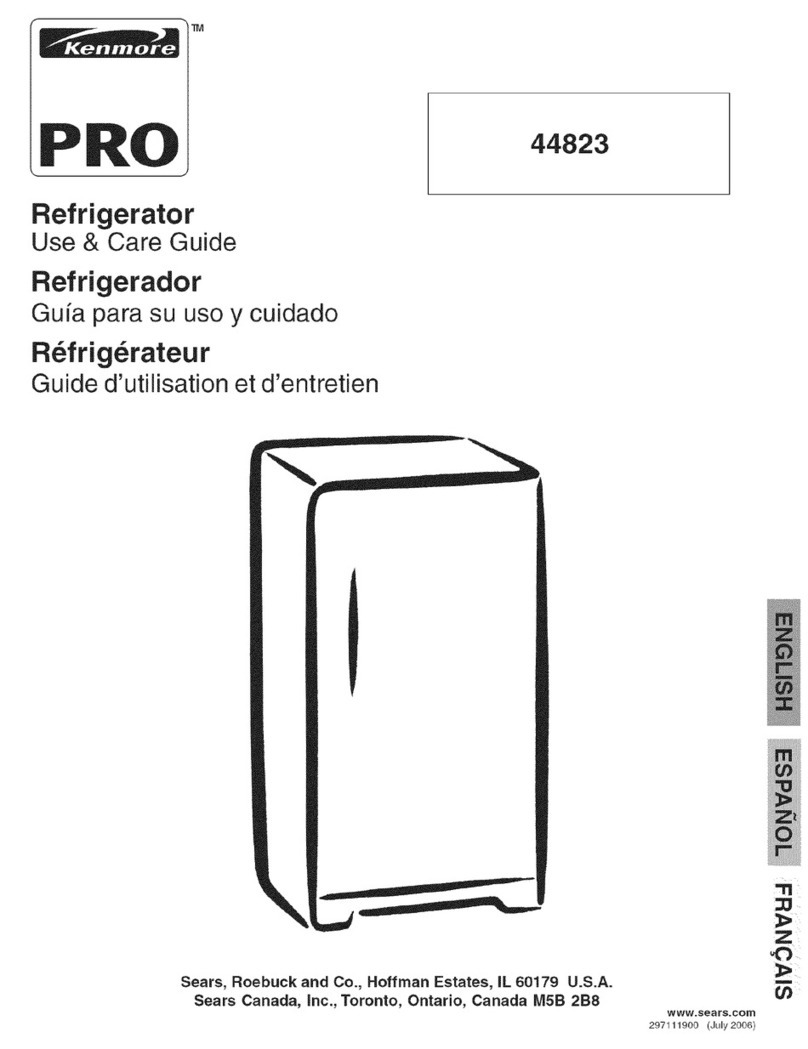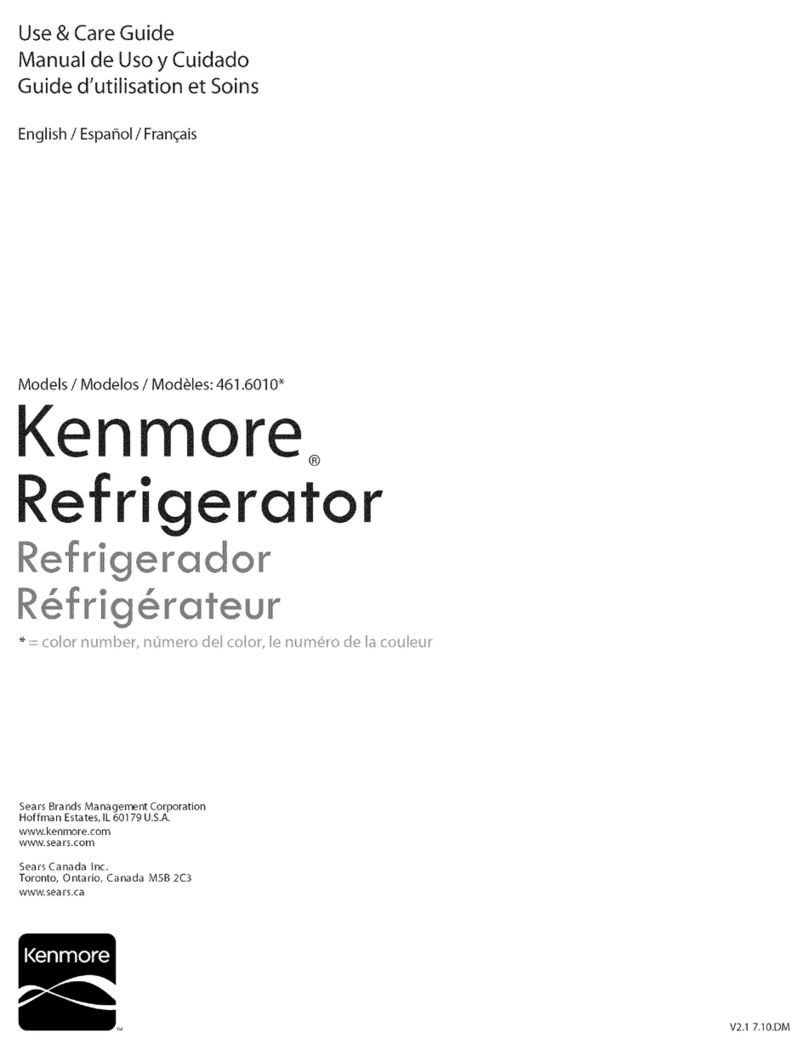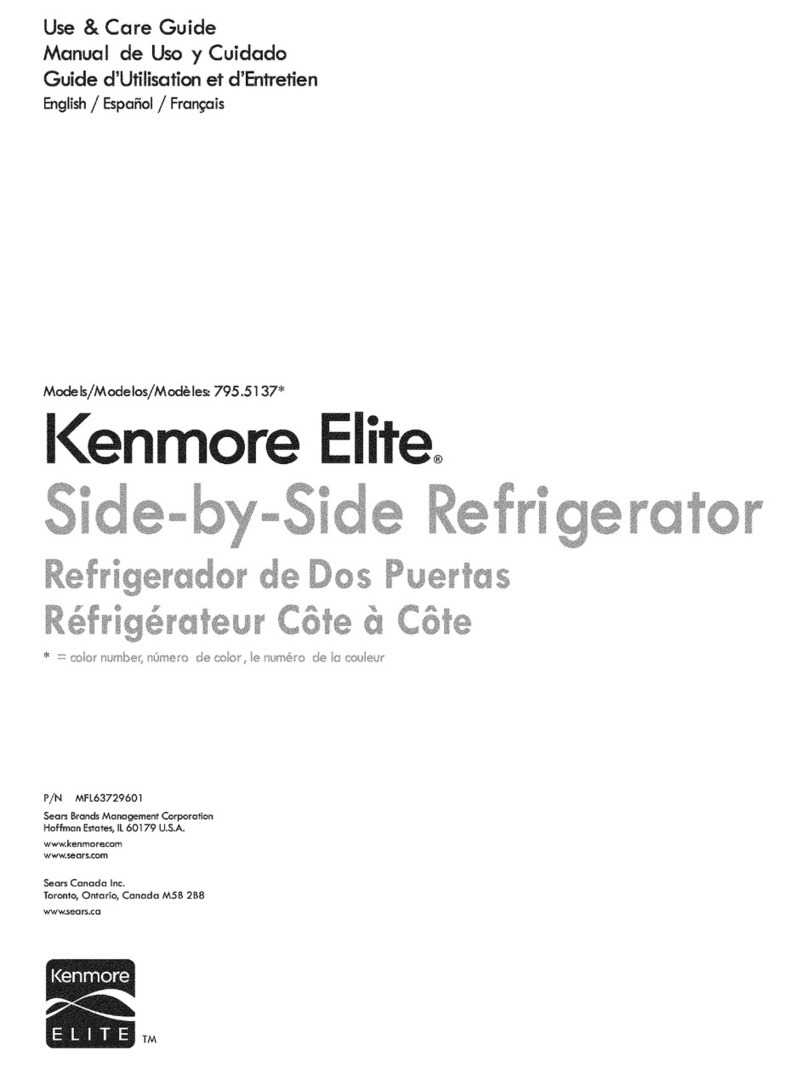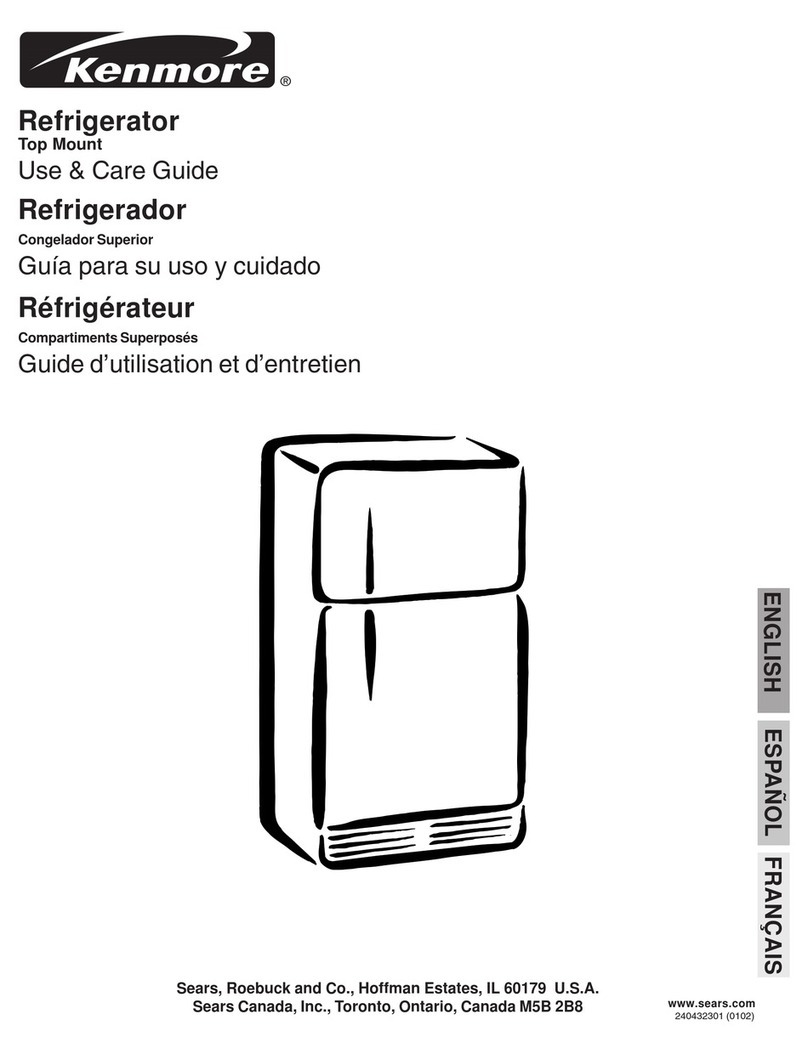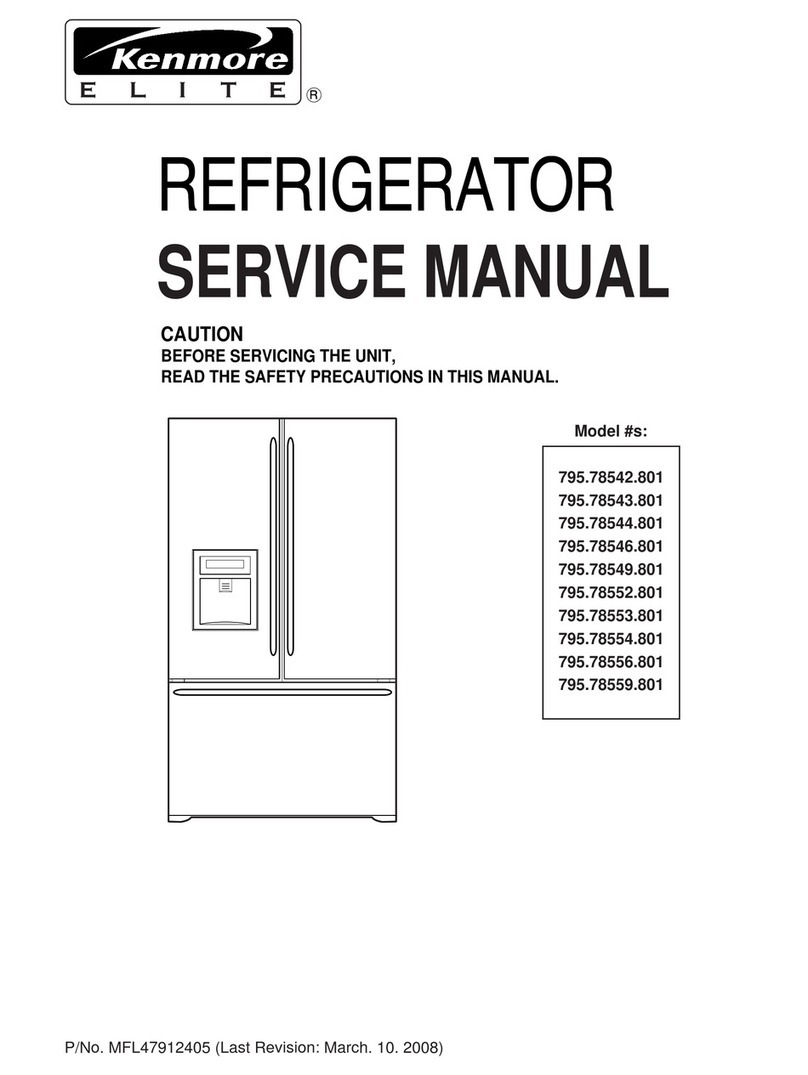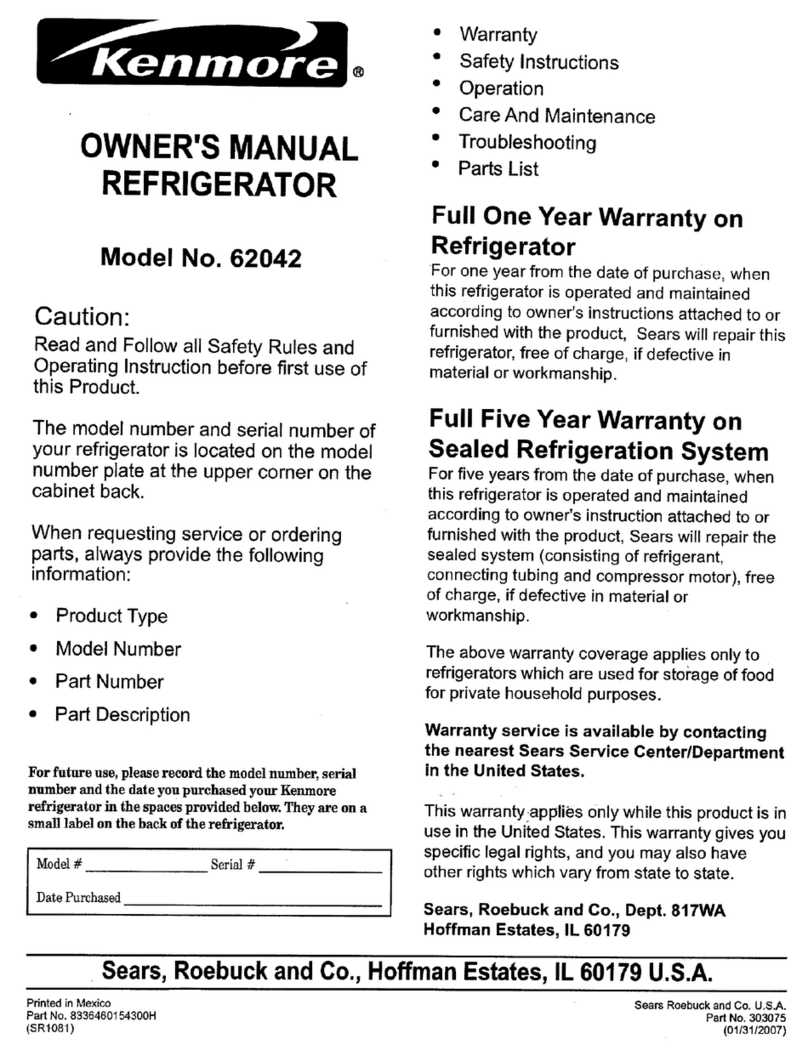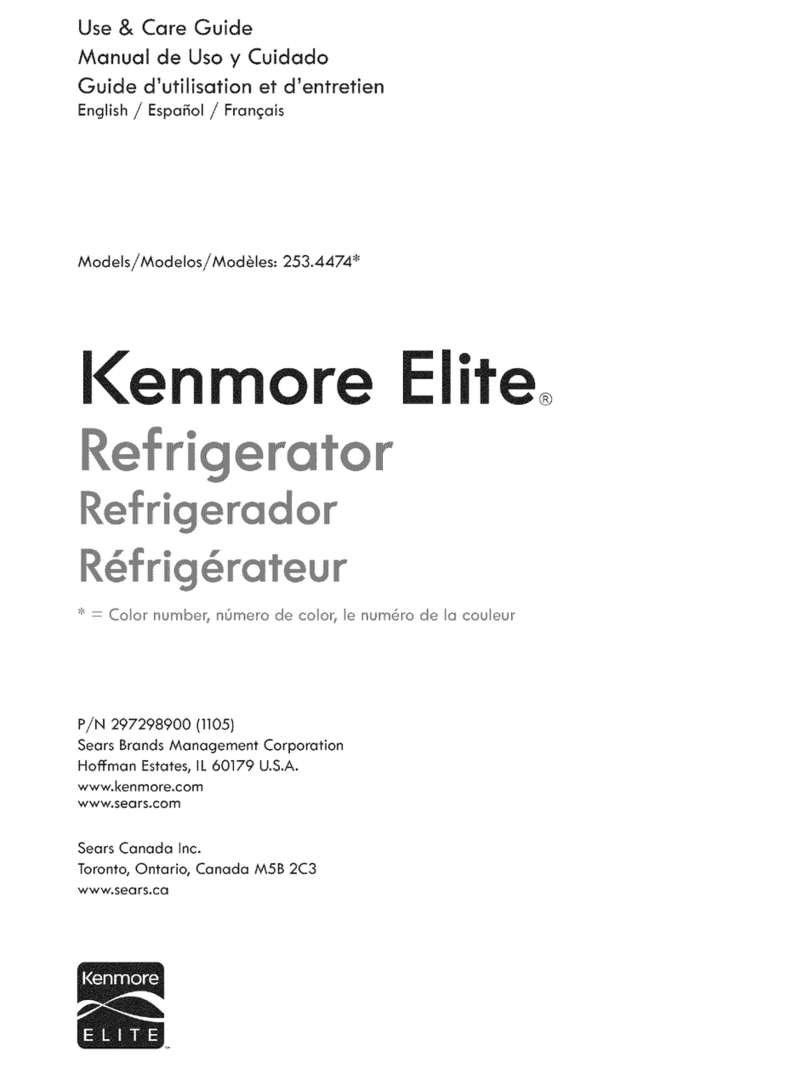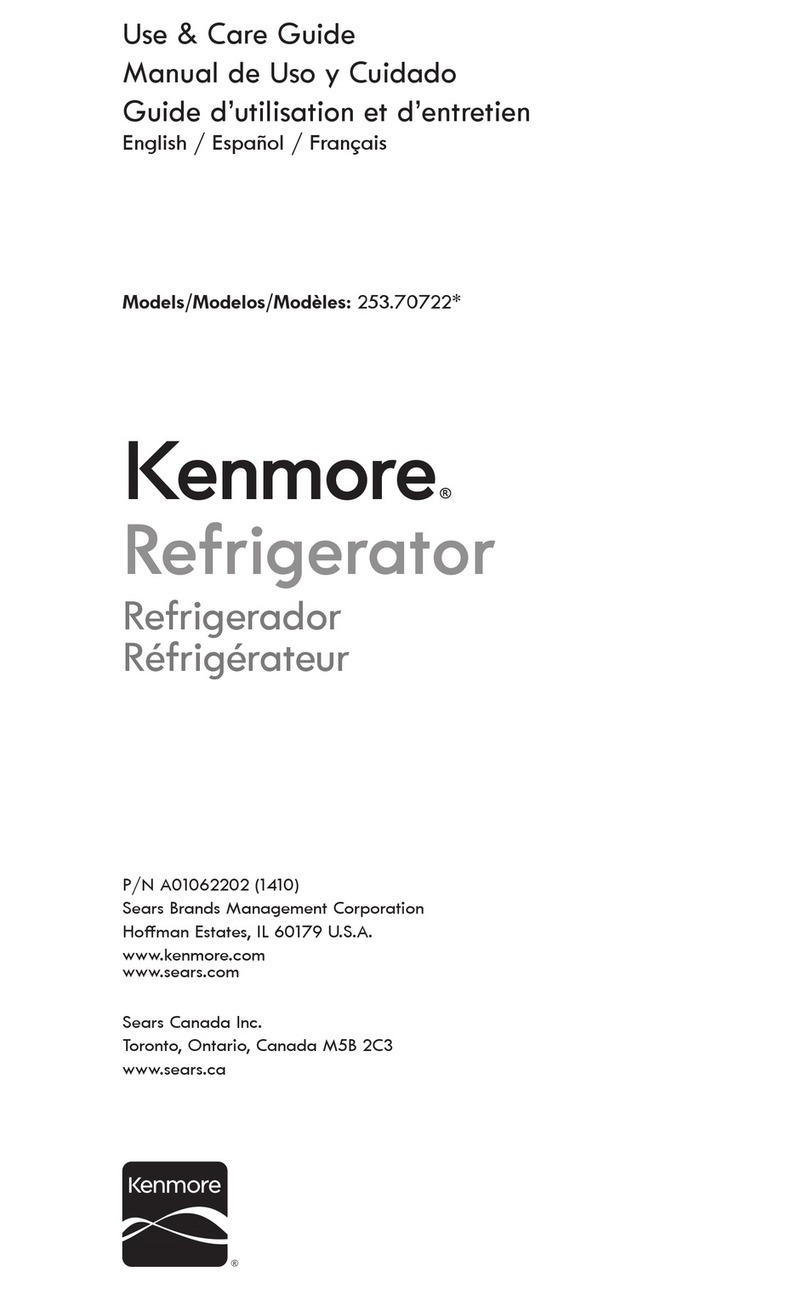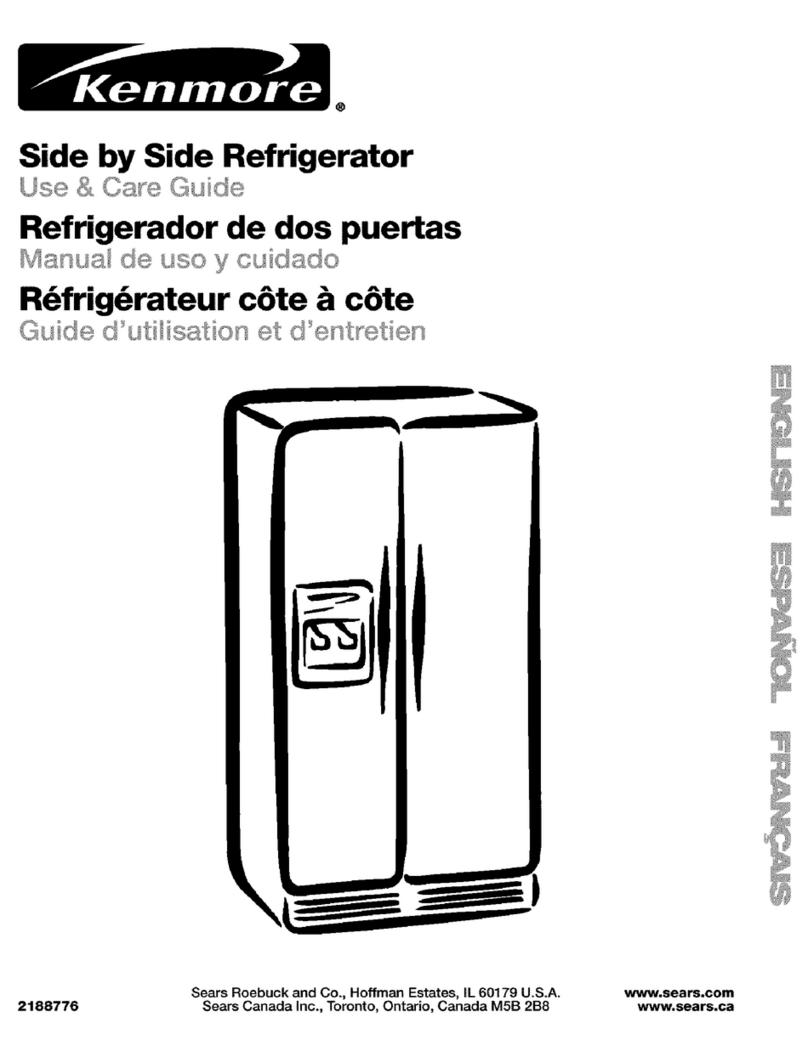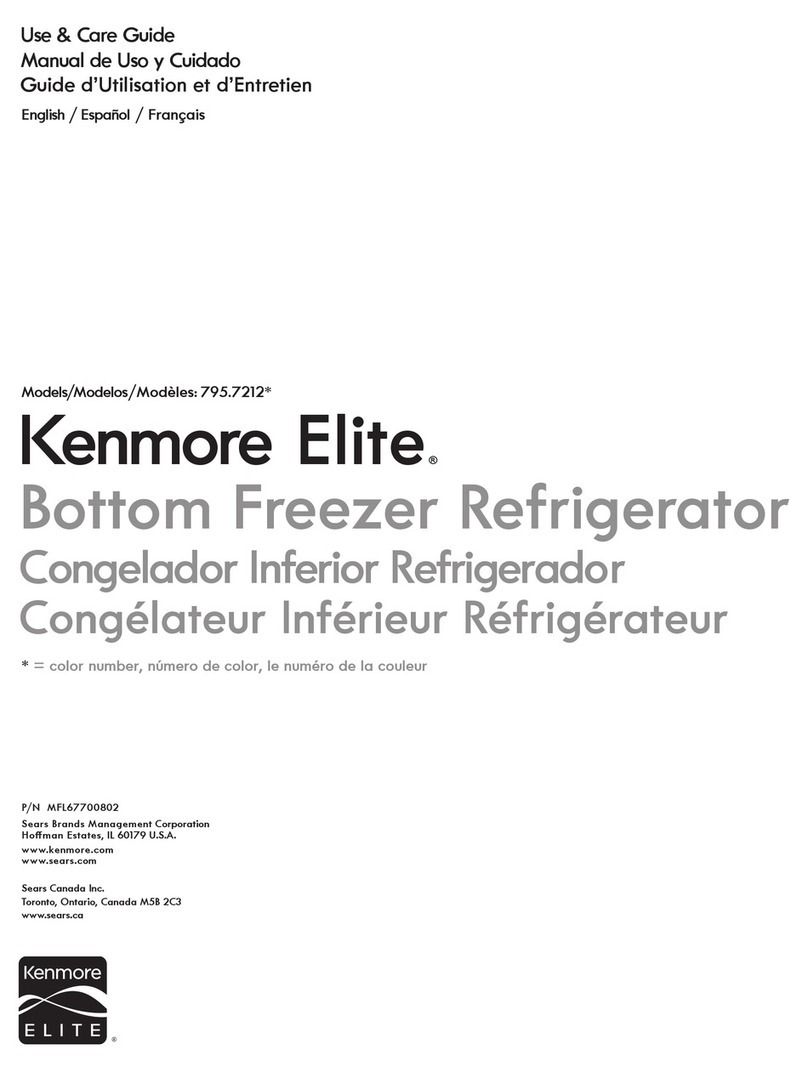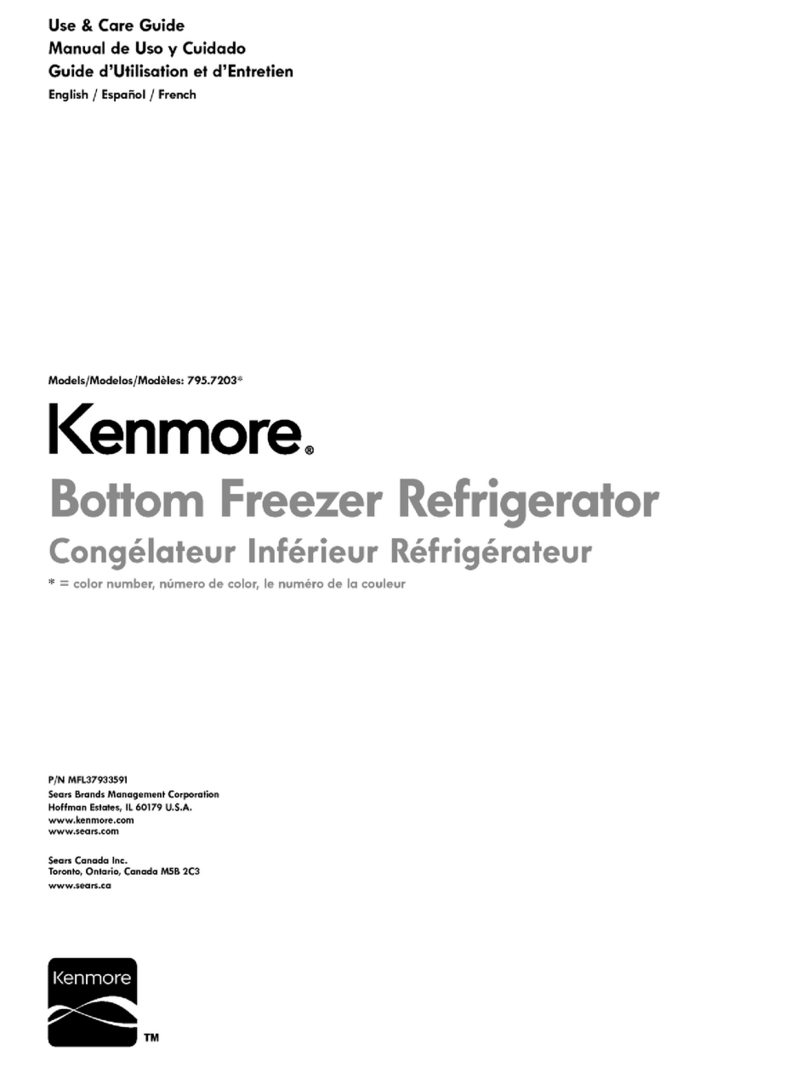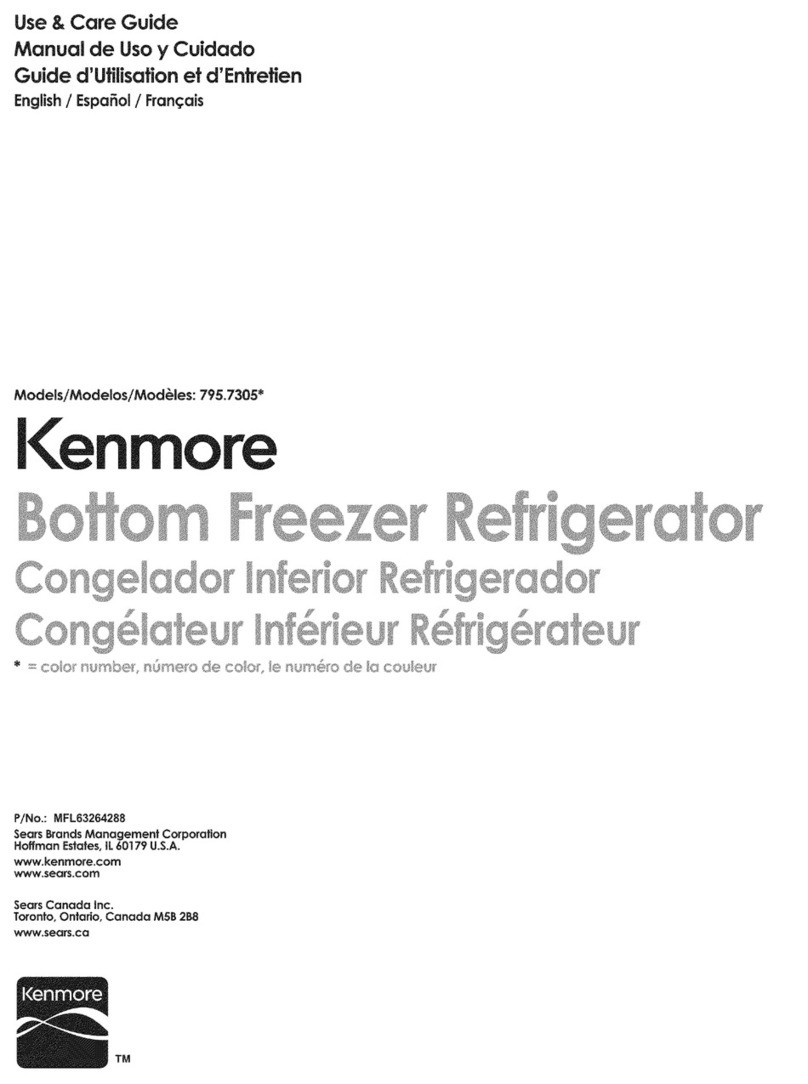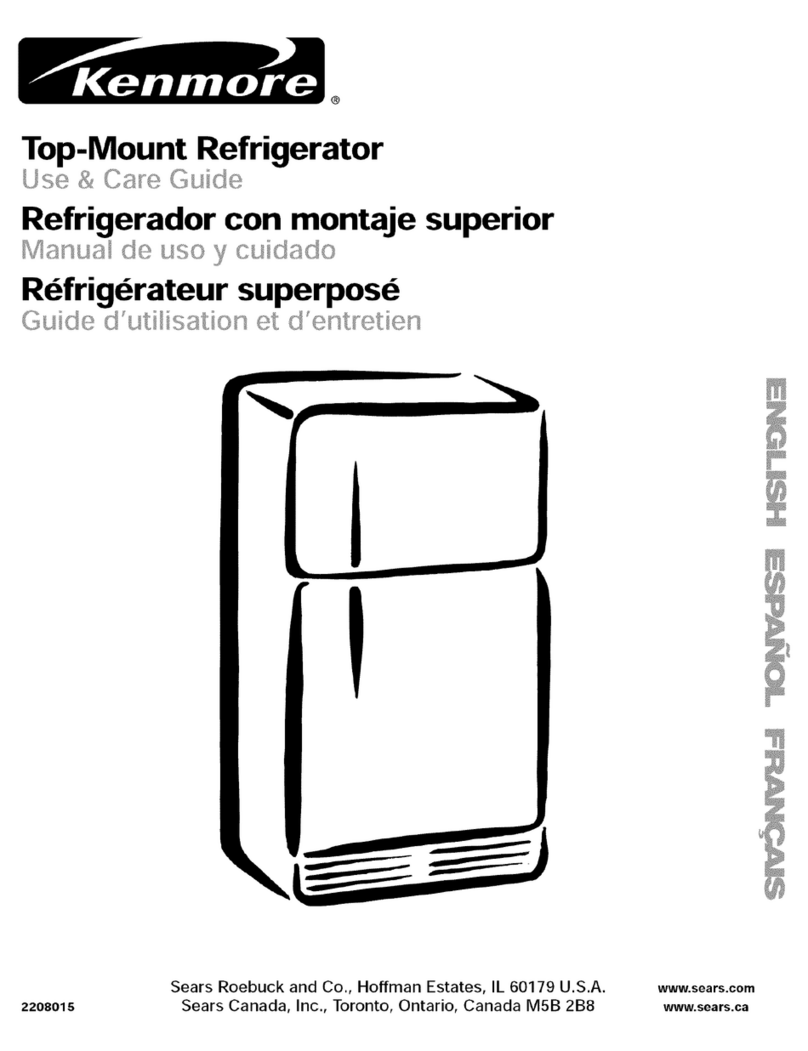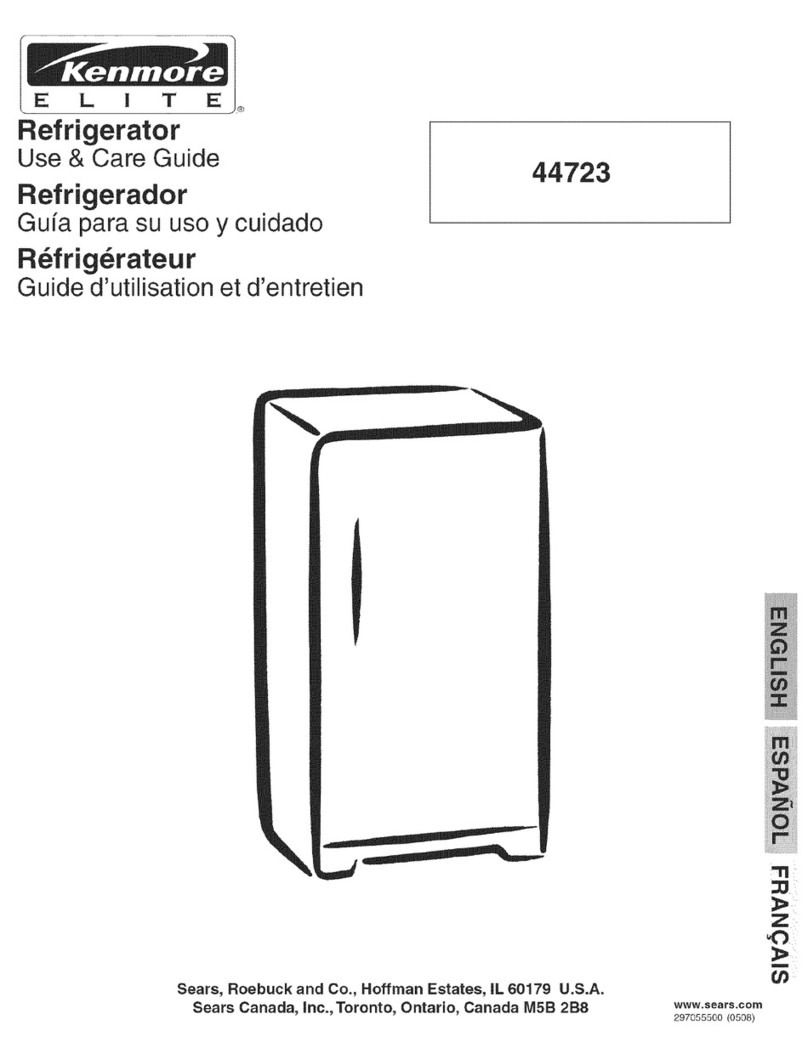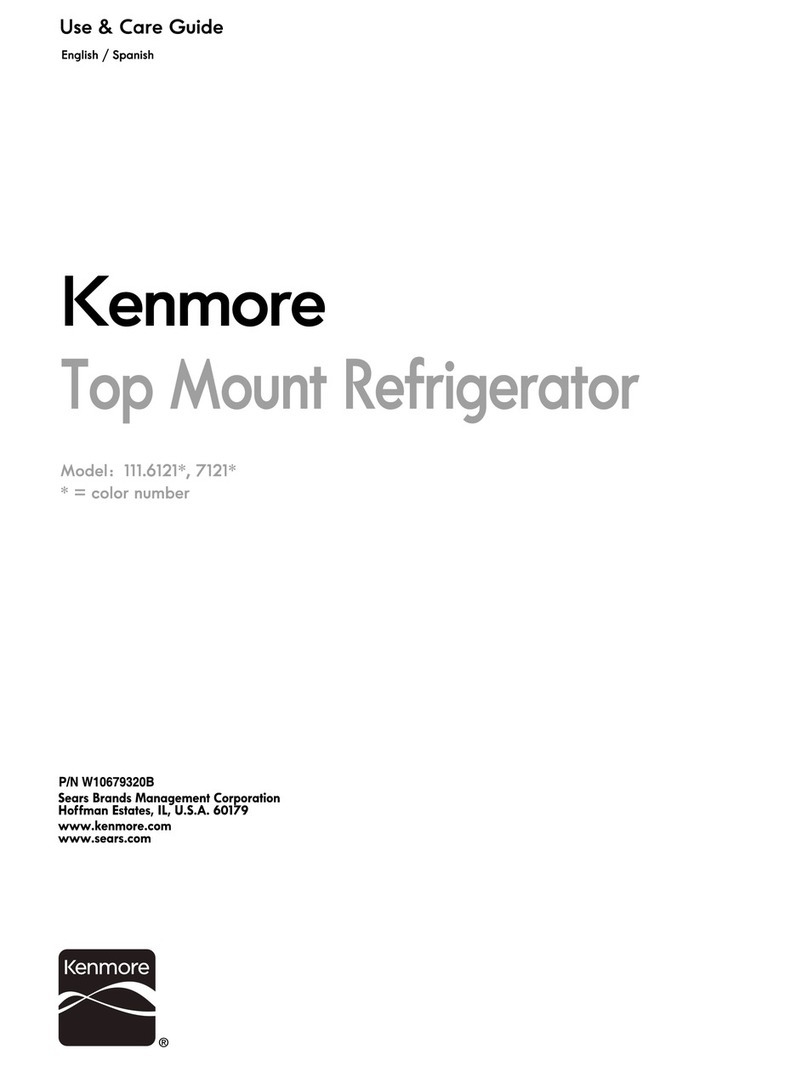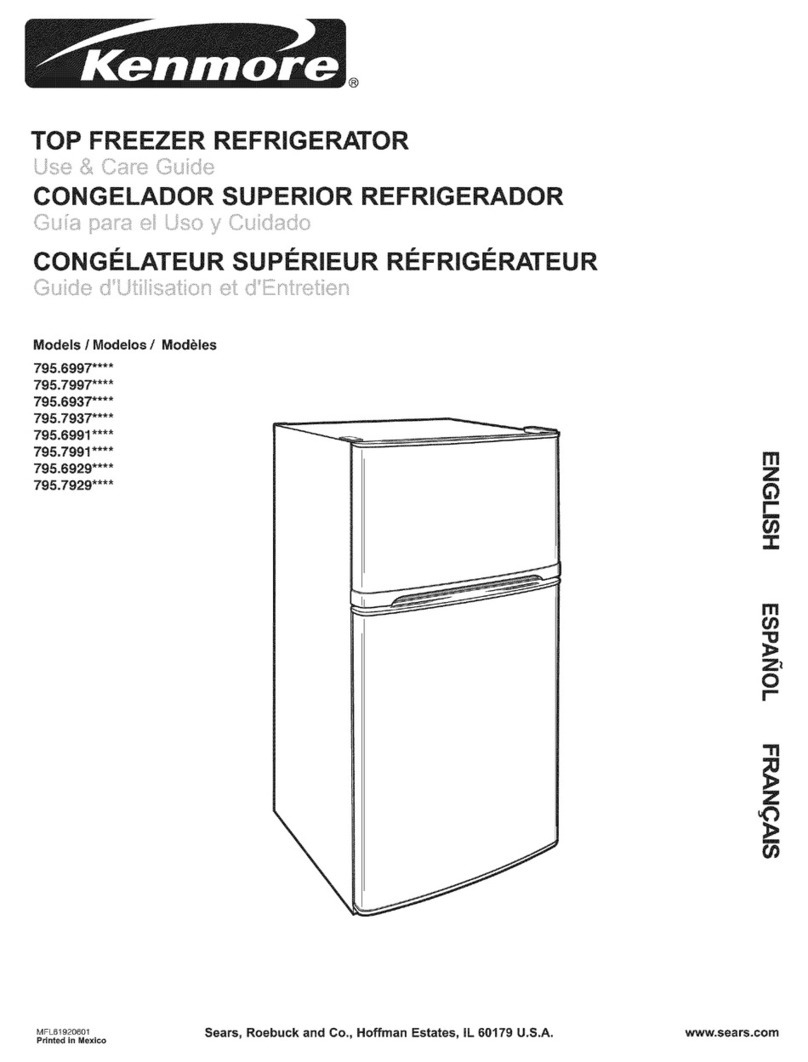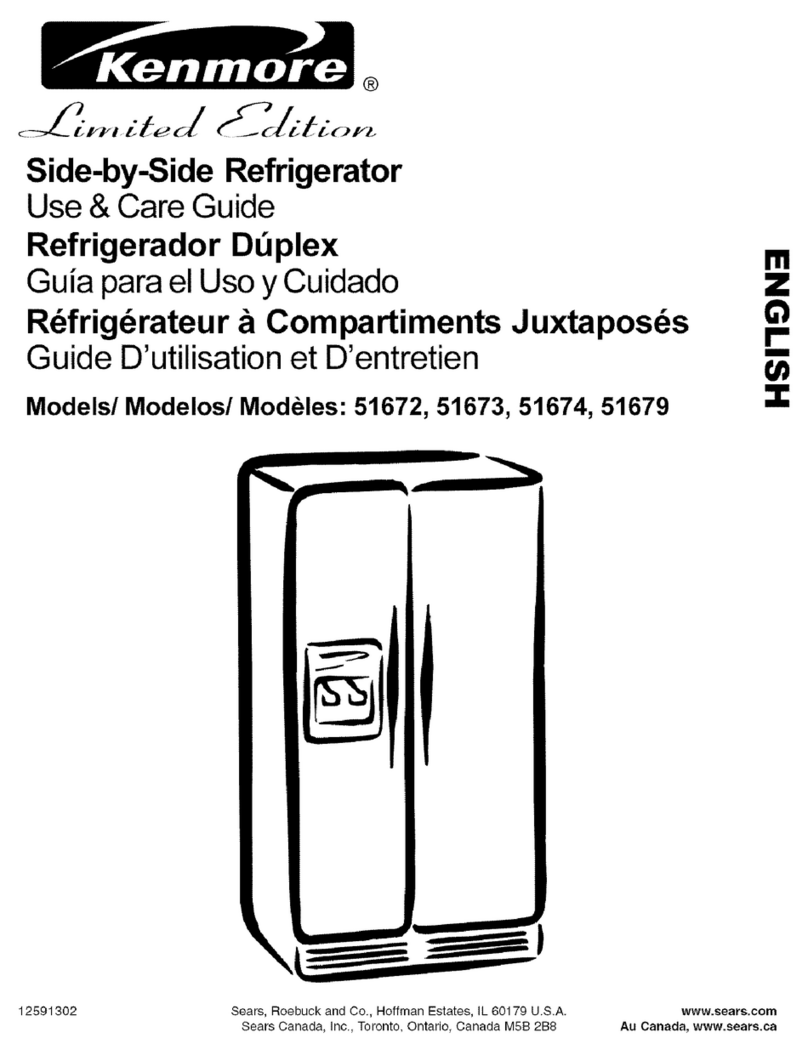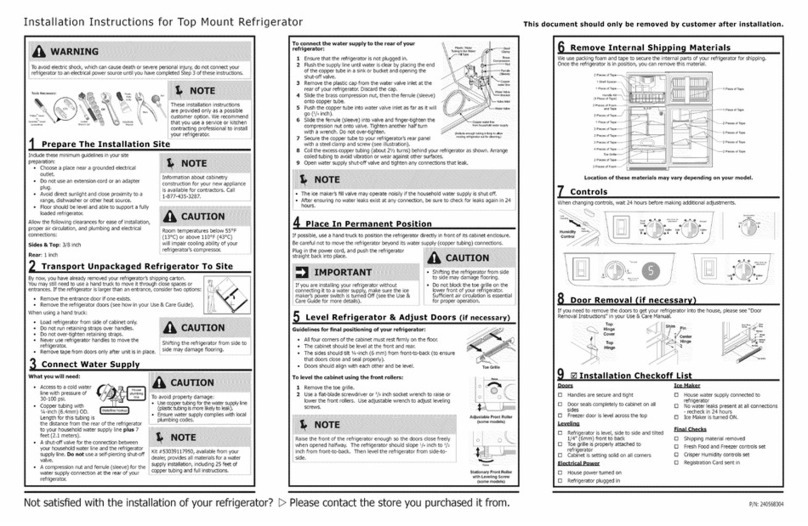
3
For Your Safety
• Do not store or use gasoline, or other ammable liquids in
the vicinity of this or any other appliance. Read product
labels for warnings regarding ammability and other
hazards.
• Do not operate the unit in the presence of explosive fumes.
• Remove and discard any spacers used to secure the shelves
during shipping. Small objects are a choke hazard to children.
• Remove all staples from the carton. Staples can cause
severe cuts, and also destroy nishes if they come in contact
with other appliances or furniture.
Child Safety
Destroy or recycle the carton, plastic bags, and any exterior
wrapping material immediately after the unit is unpacked.
Children should NEVER use these items to play. Cartons covered
with rugs, bedspreads, plastic sheets or stretch wrap may become
airtight chambers, and can quickly cause suocation.
Important Safety Instructions (Continued)
Proper Disposal of Your Appliance
Risk of Child Entrapment
Child entrapment and suocation are not problems of the
past. Junked or abandoned appliances are still dangerous –
even if they will sit for “just a few days.” If you are getting rid
of your appliance, please follow the instructions below to help
prevent accidents.
Before You Throw Away Your Old
Unit:
• Remove doors.
• Leave shelves in place so children
may not easily climb inside.
Electrical Information
• The appliance must be plugged into its own dedicated 115
Volt, 60 Hz., AC only electric outlet. The power cord of the
appliance is equipped with a three-prong grounding plug
for your protection against electrical shock hazards. It must
be plugged directly into a properly grounded three-prong
receptacle. The receptacle must be installed in accordance
with local codes and ordinances. Consult a qualied
electrician. Do not use an extension cord or adapter plug.
• If the power cord is damaged, it should be replaced by the
manufacturer, service technician, or a qualied person.
• Never unplug the unit by pulling on the power cord.
Always grip the plug rmly, and pull straight out from the
receptacle to prevent damaging the power cord.
• Unplug the unit before cleaning and before replacing a
light bulb to avoid electrical shock.
• Performance may be aected if the voltage varies by 10%
or more. Operating the unit with insucient power can
damage the compressor. Such damage is not covered under
your warranty.
• Do not plug the unit into an outlet controlled by a wall
switch or pull cord to prevent the unit from being turned o
accidentally.
• Avoid connecting unit to a Ground Fault Interrupter (GFI)
circuit.
WARNING
Please read all safety instructions before using your new
appliance.
WARNING
These guidelines must be followed to ensure that safety
mechanisms in this unit will operate properly.
IMPORTANT
CFC/HCFC Disposal
Your old refrigerator may have a cooling system that used CFCs
or HCFCs (chlorouorocarbons or hydrochlorouorocarbons).
CFCs and HCFCs are believed to harm stratospheric ozone if
released to the atmosphere. Other refrigerants may also cause
harm to the environment if released to the atmosphere.
If you are throwing away your old refrigerator, make sure
the refrigerant is removed for proper disposal by a qualied
technician. If you intentionally release refrigerant, you may
be subject to nes and imprisonment under provisions of
environmental legislation.
